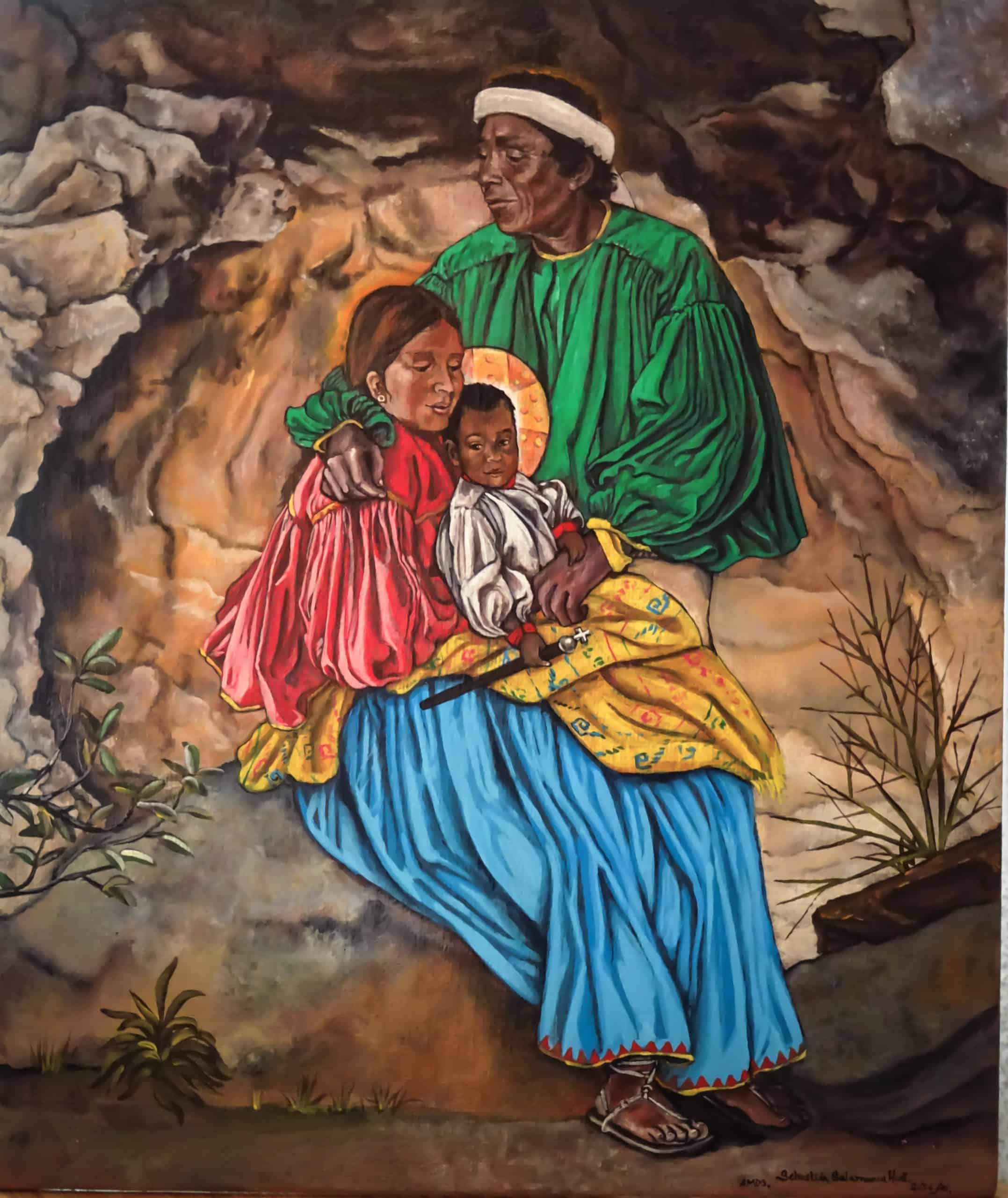What would the Holy Family look like today?
Advent IV

The following reflection is part of our “Jesuit 101” series. This piece helps us to dive deeper into the Contemplation on the Incarnation from the Spiritual Exercises. To learn more about this contemplation, check out our explainer article: “Jesuit 101: The Contemplation on the Incarnation: Why and How Jesus Shows Up”
St. Ignatius proposes the Contemplation of the Incarnation as a prayer during the Spiritual Exercises. The person making the retreat imagines the love that the Holy Trinity has for the world in choosing to intervene on behalf of humans. I first encountered this prayer as a pre-novice, a stage of Jesuit formation before entering the novitiate. The group of pre-novices, men interested in discerning to enter the Society, gathered for a month of prayer before being sent off to work in parishes, universities, schools, and other apostolates. I was sent to the Sierra Tarahumara, a remote mountain range in Northern Mexico, to the parish of St. Michael of Guaguachique. I was unsure about being missioned to this location because it was often the scene of intense narco violence. But my desire to know and to serve God, in another culture, overcame my fear of the unknown.
Upon my arrival, my superior heard I was an artist and asked me to paint a postcard. The parish would send the image as a gift to thank benefactors and others who supported the mission. At first, I wasn’t sure what to paint, but God helped me. At that time, the teachers of the Rarámuri cultural centers, local indigenous schools, organized several traditional races, such as bola race and ariweta race, with the public school of the neighboring town.
Because I wanted to immerse myself in the Rarámuri culture, I did my best to dress myself like them, and pray like them. Inculturating myself, I decided to walk the over five-hour hike to watch the races wearing Rarámuri sandals, made from tire scraps. I was reminded throughout the walk, that I was not Rarámuri, as two large blisters developed, one on each foot. Arriving at dusk, I wanted nothing more than to sleep. Ramón, the father of a Rarámuri teacher, had prepared a small space for me to sleep at his home. But the blisters got worse, and after a bad night’s sleep, I was worried I wouldn’t be able to return on foot. Ramon invited me to stay with his family, so I could go back to Samachique with the school director the next day by car.
In my infirmity, I continued to struggle with what I might paint for the Christmas card. I remember waking early, hoping for something to eat. There was Ramon, his wife, and his youngest son greeted me. Ramon’s wife was preparing a soup over a small firepit, and warming some tortillas. I sat on the floor, waiting to eat breakfast, and it struck me, that this was how Jesus must have lived. Jesus was born in a place like this: a very simple home between the mountains, with some improvised adobe walls and small rooms, a nice firepit in the middle of the patio as a kitchen, in the silence of a small town near the outskirts of the hills. Like the Holy Family, Ramon, his wife, and his small kid, had a surprising contagious happiness. This is where the Trinity decided to enter the world on a redemptive mission. As I ate my simple breakfast, I began to cry in silence at the scene I was contemplating.
This moment inspired me to paint a Rarámuri nativity scene. It took me some time to create what I saw in the neighboring village. I painted Mary, holding Jesus in her arms, while Joseph was standing next to them, his eyes watching little baby Jesus. They were Rarámuri, in a cave, their traditional home. Considering how Christ entered the world, in this Rarámuri family, I was able to see how God desired to live among us, to show us God’s redemptive love, especially in the places it is most needed. By imagining where God chose to incarnate, we all can see where we are invited to make our home, with those discarded by society, to help make the Kingdom of God a reality.
This article is dedicated to the memory of my Jesuit brothers Javier Campos, SJ and Joaquín Mora, SJ, whose lives were lost to the outrageous violence that affects Mexico. Their lives are a source of inspiration for those who have lived with the Rarámuri people.
No comments:
Post a Comment